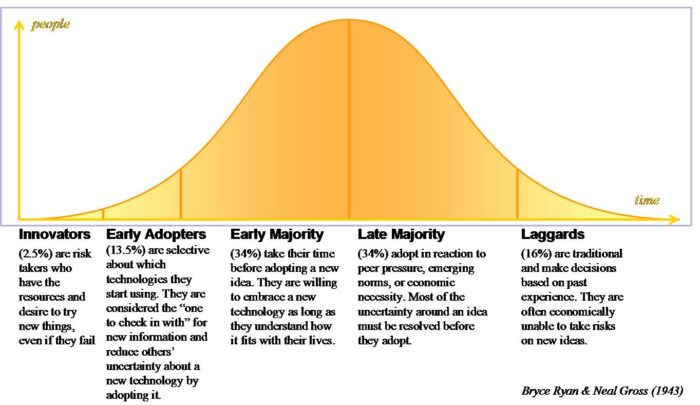At this time of year, consultants, journalists, and authors start their marketing, technology, and consumer predictions for the upcoming year. You’ll start seeing 2017 Digital Marketing Trends to Watch.
The reason why so many focus on the next 12-months is because they’re preparing their budgets to finance whatever trends need to be implemented.
But if you’re trying to implement next year’s trends now, you’re late; here’s why…
By the time you have the meetings, present the business case, identify the stakeholders, pull together the team, hire the consultant, and fund the project, the market has changed.
In fact, I can bet a silver dollar that by the time the approvals have been received to go ahead, it’s time to sit down and plan next year’s budget. Then, enthusiasm wanes, a new CEO has been installed, and that once innovative idea is abandoned.
Plus, trends coming in the next 12-months is based on predictions that were made three to five-years earlier. That then makes you a late majority which isn’t a place any company wants to be in.
When adopting new trends, companies should aim to be an early majority company…
According to the diffusion of innovation theory, there are 5 stages of adoption (see image below).

I’m an innovator. I’m willing to take the risk on a new technology. I tinker, test, and decide whether or not the new trend is something I’m willing to take to my clients.
If I fail, so what? I fail. If I succeed, I succeed.
I then share my discoveries and findings so that others can learn from me. Unlike many innovators, I continue teaching my findings until the early adopters climb on board. I’m also considered an early adopter because I help to reduce other’s uncertainty about the new trend and look to me to see what’s coming next.
Most of my clients are early majority. And over the years working with my clients, I’ve found that those who adopt a trend at this stage do very well in their industry. In fact, they tend to appear as innovators in their industry because they’re typically the first!
Here’s the deal – you don’t want to be too early, or too late…
When adopting a new trend, being too early makes you too visible. Maybe too much so. And if you’re not willing to be open to criticism, or even ridicule, then being an innovator or early adopter isn’t where you want your company or brand to be.
A great example of this is when Starbuck launched a podcast back in 2006. They were one of the few corporations podcasting at the time and because they were part of the early adopters, their mistakes were visible. And podcasting consultants (like me) were none too kind in our analysis.
But…
You also don’t want to be too late. If you’re company is late in adopting a new trend, you’ll be part of the late majority – even laggards – and while everyone in your industry has moved on, your company is still trying to put a team together to adopt a trend that is now out of date. Then, you get a reputation as the company that’s out of touch. Think Blockbuster, Sears Canada, Kodak.
So, stop watching 2017 digital marketing trends. You’re too late. This is what you need to do instead…
The first step is to innovate how you budget your company’s finances…
As you plan your annual budget, set aside money for research & development. My suggestion is to direct 10% of company profits towards the exploration of future trends.
Notice I didn’t say implementation…
There’s a reason. Before you can implement an idea, you first need to explore it. To see who’s done it before. To understand the risks and rewards. To project what will hit your industry in 3, 5 or even 10-years.
(And as an aside, most federal governments have money for companies who are implementing innovative ideas. This would be another source you can use to fund projects. Plus, check in with your accountant to understand how to spending on future trends can help you with corporate taxes.)
If you, personally, cannot do the projection, the next step is to get help…
After you identify where the money will come from to fund innovative ideas, the next step to forecast consumer trends over the next 3-5 years.
Either you can do the research to predict future trends, or you can rely on someone to do this for you. Some suggestions:
- Put together an internal think tank of employees who seem “on the edge.” And I don’t mean on the edge mentally. I’m talking about those in your company who act like outliers. These are the employees who are most likely the visionaries and the dreamers. Give them the task to meet once a month during office hours to come up with ideas. Talk to me about putting a team like this together. I’d even come in and facilitate the discussion.
- Hire a futurist to be your “ghost advisor.” This is the work I LOVE! I study my clients’ industries, then I put together a report each quarter which tells them where to put their focus. My client then presents the findings to his peers and his employees. He gets to look like a “futurist” and I get to help him from behind the scenes. Win win!
- Watch trends by using some techie tools. Google Trends is an awesome tool you can use. It’ll show you how popular certain keywords are over a given period of time. Another tool you can use is Google Alerts. A daily email is sent to you to show you who’s talking about a keyword you’re tracking.





0 Comments